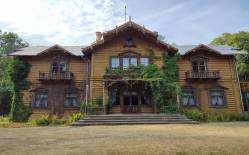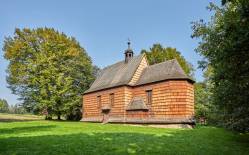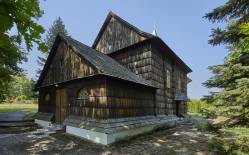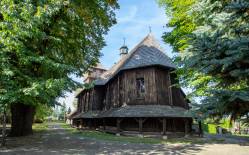Former Greek Catholic tserkva, currently Roman Catholic filial church of St. Andrzej Bobola, was built in 1770 or 1793 for the latter denomination. Some sources, however, claim that the time of its construction is unknown, and in the 1700s the building was adapted to be used as a tserkva. There is a simple explanation to this. The 18th century was a time of widespread Latinisation of the Eastern Christian rites in Poland, a consequence of the Union of Brest in 1596, which was followed by one-hundred-year long religious conflicts resolved by the Synod of Zamość in 1720 when the Union was more widely accepted and adopted. This is when Roman Catholicism style churches were built for Greek Catholic communities, or the local landowners would give up their manorial chapels for the needs of the parish, which was beneficial for both parties. At that time, rather than two separate institutions, there was a single Catholic Church. However, because of the people’s strong attachment to their customs and language, the Eastern Rite emerged and was named Greek Catholic Church by Empress Maria Theresa.
In 1945, after the resettlements, the tserkva was transformed into the filial church of St. Andrzej Bobola. In 1988 a new parish church was built and the old one was no longer used for religious ceremonies. Today it serves as a pre-funeral home.
Inside we can see 18th century altars and 20th century wooden benches.
Remnants of a manorial estate preserved in Krzeczowice include a brick outbuilding from the late 1800s, some other 19th century buildings and a landscape park. In the 1980s a wooden manor house from the 17th century was moved to the Open-air Museum Pastewnik in Przeworsk.
During the interwar period the Polish Academy of Arts and Sciences had an estate here. In June 1936 its employees started protests because of the bad working conditions. On 2 July 1936 the police opened fire and killed seven people. They were commemorated with a monument which can still be seen here today.
There is also an interesting shrine holding a figure of Our Lady Queen of Poland, founded by the local community in 1957.
Photo: Krystian Kłysewicz
Gallery
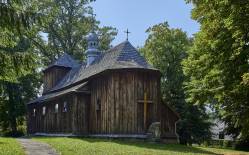
Recommended venues on the Trail



This website has been modernized with the financial support of the European Union under the Cross-Border Cooperation Programme Poland-Belarus-Ukraine 2014-2020. The responsibility for its content lies solely with the Podkarpackie Regional Tourism Board and cannot, in any case, be treated as a reflection of the position of the European Union, the Managing Authority, or the Joint Technical Secretariat of the Cross-Border Cooperation Programme Poland-Belarus-Ukraine 2014-2020.










